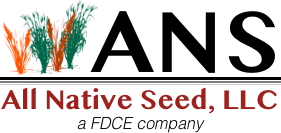
Participating in USDA conservation programs like the Conservation Reserve Program (CRP) offers significant benefits for landowners, from financial incentives to long-term ecological improvements. However, ensuring compliance with USDA requirements is essential to receive reimbursement for your efforts. Accurate and thorough documentation is a cornerstone of this process, helping to demonstrate that you’ve met program guidelines.
In this post, we’ll outline the necessary documentation for USDA reimbursement and provide tips on how to ensure compliance with CRP requirements.
Why Documentation Matters
Documentation serves as proof of your compliance with USDA conservation program guidelines. Without proper records, you risk delays or denials of reimbursement, potentially jeopardizing your CRP project’s financial viability. Documentation is not just a formality—it’s a way to protect your investment and ensure the success of your conservation efforts.
Essential Documentation for USDA Reimbursement
Here are the key types of documentation typically required for USDA reimbursement:
1. Seed Labels and Invoices
What to Document: Keep the original seed labels and purchase invoices for all seed used in your CRP project. Seed labels should detail species, germination rates, purity, and other critical information.
Why It’s Required: The USDA needs to confirm that the seed mix meets CRP program specifications for native plants.
2. Establishment Plans
What to Document: A detailed plan outlining how you prepared, planted, and managed the site. Include information about soil preparation, planting methods, and timelines.
Why It’s Required: This demonstrates that your project follows USDA-approved methods for site establishment.
3. Maintenance Records
What to Document: Keep records of ongoing maintenance activities, such as mowing, herbicide applications, or controlled burns.
Why It’s Required: Maintenance records show that you are managing the site as outlined in your CRP contract to promote successful establishment and long-term health.
4. Herbicide Application Logs
What to Document: Record dates, herbicide types, application rates, and the areas treated.
Why It’s Required: Accurate herbicide logs are critical to verify that invasive species are being controlled without harming native plants.
5. Photographic Evidence
What to Document: Take clear, time-stamped photos of your site before, during, and after planting.
Why It’s Required: Photographic evidence provides visual proof of compliance with CRP guidelines and progress toward project goals.
6. Progress Reports
What to Document: Summarize project milestones, such as planting completion, germination rates, and habitat establishment.
Why It’s Required: Progress reports help the USDA evaluate whether your project aligns with program objectives.
Tips for Ensuring Compliance
Understand USDA Requirements
Familiarize yourself with the specific documentation requirements outlined in your CRP contract. Each program and project may have unique guidelines, so review them carefully before starting your project.
Work with Reputable Seed Providers
Choose a seed provider like All Native Seed that understands USDA requirements and can supply seed that meets CRP specifications. We provide clear, detailed seed labels and invoices to make documentation easy.
Maintain Organized Records
Create a dedicated system for organizing your CRP documentation. Use folders or digital tools to store seed labels, invoices, and maintenance logs in one place for easy access.
Keep Records Updated
Document activities as they occur to avoid gaps or inconsistencies. Waiting to compile records at the last minute can lead to errors or missing information.
Consult Experts
If you’re unsure about any aspect of documentation, consult with professionals experienced in CRP projects. At All Native Seed, we provide guidance and resources to help landowners navigate the documentation process.
How All Native Seed Supports Your Compliance
At All Native Seed, we understand the complexities of CRP requirements and the importance of proper documentation for USDA reimbursement. Here’s how we help:
Seed Labels and Documentation: Our seed comes with detailed labels and documentation that meet USDA standards, making it easy to verify compliance.
Expert Guidance: With over 400,000 acres of successful plantings, our team has the expertise to help you prepare and maintain accurate records.
Comprehensive Support: From seed selection to site establishment, we’re here to assist you every step of the way, ensuring your project stays on track and within compliance.
Protect Your Investment with Proper Documentation
Accurate and thorough documentation is essential for securing USDA reimbursement and achieving success in your CRP project. By staying organized, working with reputable partners, and understanding program requirements, you can streamline the process and focus on creating a thriving habitat.
Contact All Native Seed today to learn more about how we can support your conservation goals and simplify the USDA compliance process. Together, we’ll ensure your project’s success from start to finish.
